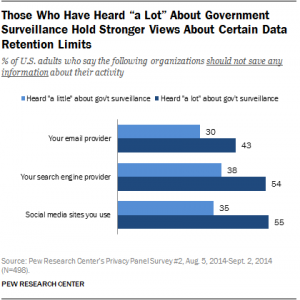
Customer experience is now becoming one of the most important factors to merchants, and this approach is going to increase. New products and services must be customer-centric, with a greater level of convenience. Otherwise, there are fewer chances to attract or retain the audience.
According to 2016 Edelman Trust Barometer Report, customers that trust businesses are more likely to buy their products or services, and recommend them to friends and family. This trust is highly connected with the experience of using the product or, when talking about eCommerce, the buying experience.
Many merchants focus mainly on their website design, functionality, etc. but usually forget about the importance of convenient purchasing or robust payment systems. In fact, some companies are focusing so much on their products, they forget about their customers. If you want to grow, it must change.
Have you ever wondered why potential customers abandon their shopping carts? Maybe it’s because of payments on your website?
Innovative companies understand the need for providing user-friendly solutions, so if you choose your business partner wisely, you will bring innovation to your customers in the best possible way. Wondering how?
Consumers decisions are mostly based on the ease and convenience of using a certain solution whether it’s a new smartphone, or a financial product. When you provide a fast and user-friendly purchasing process, with a seamless checkout, it’s more probable that consumers will choose your eCommerce store than one with 6-steps (or more) in checkout, and lots of fields to fill out.
Adapt to millennials needs
People still trust more traditional banks than fintech companies, and it’s not surprising. Banks are institutions that have been around for decades, but this is changing. Just like the entire financial landscape.
Many reports show that millennials are disappointed with the level of bank services and are less faithful customers. However, at the same time, they are more willing to use new technologies.
Banks are failing to adapt to younger customers’ needs and expectations. That’s because traditional companies aren’t ready for a technological revolution yet. So millennials seek new solutions outside of traditional banks.
Fintech companies know that the failures of banks are a huge opportunity for them. There is a great opportunity to offer customers what they really want. They also need to provide friendly and responsive support, and always be ready to help.
It’s all about customer’s trust. Fintech companies still have work to do and to make customers trust them the same way they trust banks.
Choose a payment provider that cares about your customers
When you, as a merchant, look for a payment solution for your website, focus not only on costs, technology, and integration process, but also on customer support level. It is closely connected with the service you offer your clients.
Do they have the support team in-house or have they outsourced it to some external firms? Are they ready to help and answer customer’s questions in no time?
Imagine this situation: You sell items at your eCommerce store, build your brand, people trust you and then… there is a problem with payments. There are some errors when customers click the ‘Pay’ button – or the number of card data stealing is growing. What will you do in this situation? You will try to contact your payment provider first.
Now imagine that no one is responding – you lose customers and sales. A few days pass by and the provider just tells you to be patient. Not cool, right?
Fintech is one of these industries where clients need to get a quick response, especially when it comes to payments. There’s no space for the mistakes and unresponsive customer service.
Customers should be put first. The fintech specialty is to make financial services much simpler and more accessible to customers. Consumers should get what they need.
When you choose a payment provider, you should look for one that will be also your payment partner – with your customers’ needs in mind. Make sure you can count on the payment provider anytime problems occur. When it comes to payments, your business should be built on trust to close the sales and make your customers feel safe.
Answer yourself: Would you pay online at an eCommerce store’s page if you are not sure payments are secure? Or when you need to go through 6 or more steps to finally make a payment? What if you have a problem with payments and no one from the certain company will answer your messages?
Now you see the point.
Talk to your customers
The way you communicate with your customers makes the audience more engaged. Communicating with them via email, social media, landing page, or through the content on your website attracts new leads and builds customer trust. All that comes with the user experience – which is crucial to run an affordable business.
Customer relationships really matter. The service you provide them has an effect on audience behavior. When customers feel well on your website, and when you offer them a seamless experience in every aspect of purchasing process, they will come back. There are also higher chances that they will write a positive review, and recommend your product or service to their family and friends.
Show customers you care, and provide the value of the experience over your competitors. One of the ways of building customer relationships is providing innovative technology solutions, so give your clients what they expect and meet their needs.
Over to you
The customer-focused approach is extremely important in every area of business. Fintech companies should follow customer’s needs, and have the user experience in mind at every stage of releasing their product or service.
Fintech solutions help both businesses, and their customers, by providing a seamless customer experience and tools to manage their payments better.
Listening to the customers and converting their feedback into products they love is a huge challenge for both payment providers and merchants that accept payments on their websites.
Business & Finance Articles on Business 2 Community(90)







